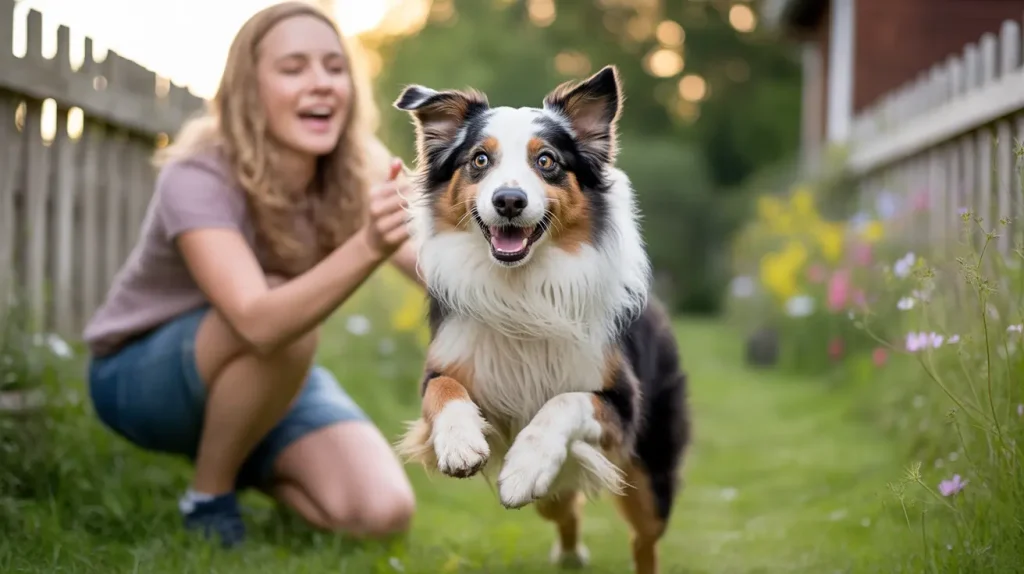Effective Positive Reinforcement Strategies for Dog Training

The Journey of Dog Training
Training a dog can be a rewarding yet challenging journey for any owner. One of the most effective approaches to dog training is the use of positive reinforcement strategies. This method not only promotes good behavior but also strengthens the bond between you and your furry friend. As you embark on this journey, it’s essential to understand the nuances of learning and communication from your dog’s perspective.
Positive reinforcement can take many forms, and understanding these strategies can lead to successful outcomes. Here are some key components that can significantly enhance your training sessions:
- Treats: Using small, tasty rewards is a classic method to encourage desired behaviors. For example, training your pup to sit may involve offering a piece of kibble or a small treat every time they successfully perform the action. Consistency is vital; make sure to have a selection of treats on hand to maintain your dog’s interest and motivation.
- Verbal Praise: Dogs respond remarkably well to tone and inflection. A simple “good boy!” or “well done!” when your dog follows a command can reinforce their learning. Pair your praise with excitement in your voice to create an uplifting atmosphere that makes them eager to learn.
- Affection: Physical touch, such as petting or a gentle scratch behind the ears, can reinforce positive actions effectively. Dogs are social animals that thrive on attention and approval from their owners, making affectionate gestures incredibly impactful during training.
- Playtime: Incorporating play as a reward can keep training sessions enjoyable and invigorating. For instance, if your dog successfully fetches a ball, immediately engage them in a fun game as a reward. This not only enhances the learning experience but also solidifies the behavior you’re encouraging.
Research has shown that dogs trained with positive reinforcement techniques tend to learn faster and exhibit better overall behavior. This humane approach minimizes stress and fear in your pet, ensuring a more fulfilling training experience for both of you. A study revealed that dogs trained with positive methods are less likely to show signs of aggression and anxiety, fostering a safer environment for everyone involved.
Dive deeper into the world of dog training by exploring various positive reinforcement methods. Each strategy opens up new avenues for understanding and communicating with your dog. For instance, you might discover clicker training, a method where a click sound is made to mark good behavior, serving as a shortcut to rewards. Understanding these approaches can lead to a harmonious relationship that goes beyond merely following commands, allowing your dog to thrive as a companion.
Investing time and effort into understanding your dog’s needs can unlock their potential, leading to a happy, well-adjusted pet that is a joy to have in your life.

DISCOVER MORE: Click here to learn about natural nutrition for pets
Understanding Your Dog’s Motivations
To effectively employ positive reinforcement strategies in dog training, it’s crucial to understand what motivates your dog. Just like people, dogs have unique preferences that influence their behavior. Identifying these motivations can significantly enhance your training approach, making your sessions more effective and enjoyable.
Many dog trainers emphasize the importance of discovering the right reward for your pooch. This can range from food and toys to praise and affection. Here’s a closer look at how to identify and utilize these motivators:
- Food Rewards: Dogs often find treats to be the most compelling motivation. Experiment with different types of treats—some may respond better to soft, chewy snacks, while others may prefer crunchy ones. You can even use small pieces of their regular kibble to keep them eager without overfeeding. Recognizing that certain treats have more value can guide you in offering rewards based on the dog’s performance and specific situations.
- Favorite Toys: Toys can serve as effective rewards, particularly for more playful breeds. For instance, if your dog is enthusiastic about a particular squeaky toy, using it as a reward can make training sessions something they look forward to. Using toys also adds a layer of interaction that strengthens your bond while promoting physical activity.
- Social Interaction: Dogs are social creatures and thrive on companionship. Engaging with your dog through enthusiastic praise, cuddles, or simply spending time together can be a powerful reinforcement. This method not only promotes positive behavior but also strengthens the emotional connection you share.
- Exploring the Environment: Sometimes, the world around your dog can serve as a great reward. Allowing your dog to sniff interesting scents or enjoy a short walk after successfully completing a command can reinforce their learning. This approach taps into a dog’s natural instincts, making training sessions both fulfilling and stimulating.
The process of identifying what works best for your dog may take some time, but it is an essential step in successfully employing positive reinforcement strategies. By tailoring your rewards to suit your dog’s individual preferences, you pave the way for a more productive and enjoyable training experience. This level of customization not only enhances the effectiveness of each session but also builds trust and respect between you and your furry companion.
Engaging in positive reinforcement is more than simply teaching commands; it’s about creating a language that both you and your dog understand. As you develop this understanding, you not only train your dog effectively but also encourage a more harmonious relationship grounded in mutual respect and joy. As you dive deeper into advanced training methods, you’ll find that mastering the art of motivation will bring your dog’s best qualities to the forefront, turning your training journey into a delightful adventure.
| Advantage | Description |
|---|---|
| Enhanced Learning | Dogs learn behaviors faster when positively reinforced, strengthening the bond with their owner. |
| Improved Behavior | Positive reinforcement encourages good behavior, reducing anxiety and behavioral issues. |
| Increased Motivation | Rewarding desired actions boosts your dog’s enthusiasm to learn and follow commands. |
| Stronger Bond | The process of training together with rewards fosters a deeper trust and connection. |
The implementation of Effective Positive Reinforcement Strategies not only aids in mastering commands but also cultivates a positive atmosphere for both dogs and their owners. By focusing on rewarding behavioral successes, owners can experience profound joy and satisfaction through training sessions that are both engaging and beneficial. The insights you gain from this approach provide an invaluable foundation for nurturing a well-behaved and emotionally balanced pet. Exploring these strategies can lead you to discover the power of communication through affection, making each session a stepping stone towards a harmonious relationship with your canine counterpart. Your journey into effective dog training has just begun, and there is much more to uncover in positively shaping your dog’s behavior!
LEARN MORE: Click here to discover essential tips for your pet’s mental health
Integrating Positive Reinforcement Techniques
Once you’ve identified your dog’s motivations, the next step is to integrate positive reinforcement techniques into your training regimen. A well-structured training session can foster better learning while also nurturing a positive relationship with your pet. Here are some effective strategies to help you on your training journey:
- Consistency is Key: Dogs thrive on routine and predictability, so ensuring consistency in your commands and rewards is crucial. Always use the same verbal cues and gestures for specific commands. Over time, your dog will learn to associate the command with the action, making it easier for them to understand what is expected.
- Timing of Rewards: The timing of your rewards can significantly impact your dog’s learning process. To reinforce desired behaviors effectively, offer a treat or praise immediately after your dog successfully follows a command. This immediate reward helps the dog make a clear connection between the behavior and the reward, solidifying that learning in their mind.
- Gradual Progression: Start with simple commands and gradually increase the complexity as your dog learns. For instance, begin with basic commands like “sit” or “stay” before moving on to more challenging skills such as “roll over” or “play dead.” This gradual progression keeps your dog engaged without overwhelming them and allows for the reinforcement of behaviors that build their confidence.
- Variety in Rewards: Keep the training exciting by varying your rewards. While food may be a primary motivator, alternating between treats, toys, and praise keeps your dog attuned and eager to learn. This variety prevents boredom and maintains your dog’s interest throughout the training sessions.
- Positive Association with New Environments: Training in different settings can enrich your dog’s learning experience. By introducing them to various environments—like parks, home, or even around friends—your dog will learn to respond to commands outside their usual surroundings. This approach helps generalize their training, making them more reliable in diverse situations.
Another effective training strategy is the concept of “shaping,” a gradual reinforcement technique that encourages your dog to get closer to the desired behavior. For instance, if you are teaching your dog to roll over, begin by rewarding them for simply lying down. As they master that behavior, provide rewards for rolling onto their side and eventually rolling all the way over. This incremental method can significantly reduce frustration for both dog and trainer while promoting progress through positive reinforcement.
Additionally, incorporating training games can transform a potentially mundane routine into a fun activity. Engaging your dog in activities like hide-and-seek can help reinforce commands while pairing them with fun and play, turning training into an enjoyable bonding experience.
As you implement these positive reinforcement strategies, remember to celebrate small victories along the way. Each successful response from your dog is a stepping stone toward a well-trained companion. With patience, consistency, and creativity, you’ll not only teach your dog commands more effectively but also foster a deeper connection with your pet, setting the foundation for lifelong companionship built on trust and understanding.
DIVE DEEPER: Click here to discover more
Conclusion
In conclusion, implementing effective positive reinforcement strategies for dog training not only enhances your dog’s learning experience but also strengthens the bond between you and your furry friend. By focusing on the essential elements of consistency, timing of rewards, gradual progression, and variety, you will create a structured environment in which your dog can thrive. Emphasizing a positive association with diverse settings allows your dog to apply their training in real-world situations, ensuring they become well-adjusted companions.
The practice of “shaping” behaviors further exemplifies the power of gentle guidance in training, allowing your dog to progress at their own pace while minimizing stress. Incorporating fun training games transforms routine exercises into enjoyable bonding experiences, illustrating that learning can indeed be a joyous affair. As you embrace these strategies, remember to approach training with patience and a celebratory mindset, acknowledging the small victories that contribute to your dog’s growth.
By fostering a training atmosphere rich in encouragement and support, you pave the way for a lifetime of trust and understanding between you and your pet. As you embark on this rewarding journey, consider exploring additional resources on canine behavior and positive training to continue enhancing your skills. Ultimately, the journey to a well-trained dog is not just about obedience; it is about cultivating a fulfilling partnership that will last a lifetime.


